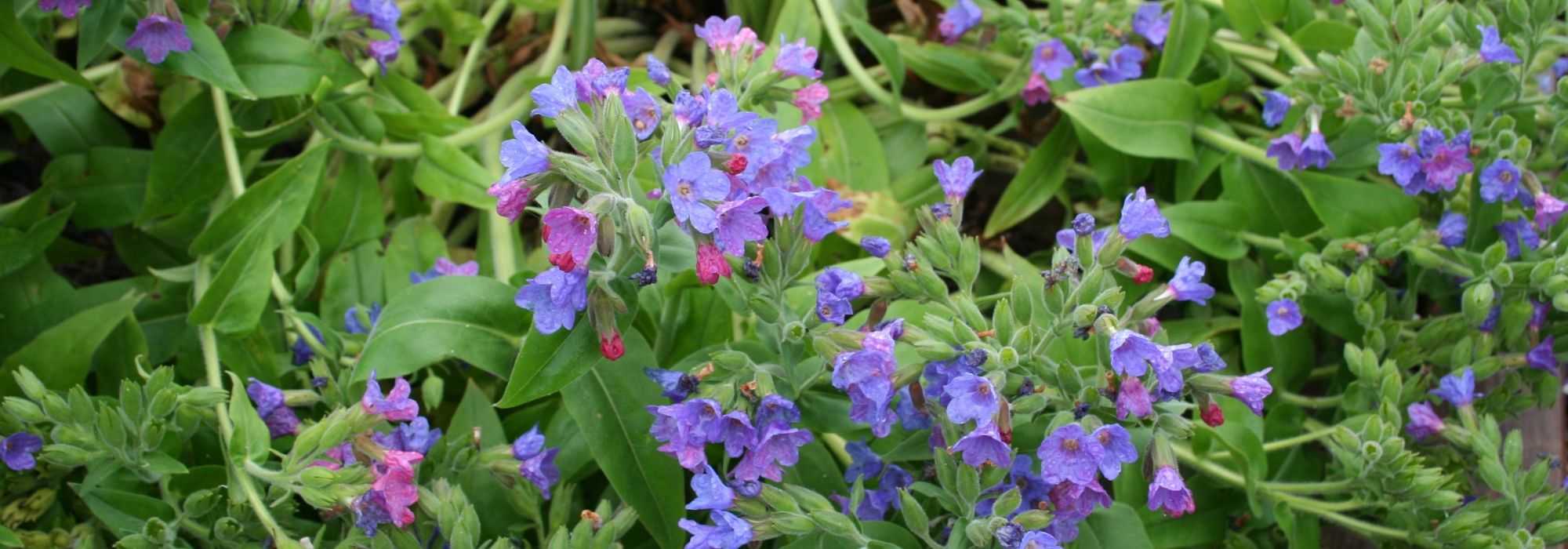
Lungwort, Pulmonaria: planting, care
Summary
Pulmonaria, in a nutshell
- Pulmonarias are herbaceous perennials recognisable by their generous foliage speckled with silvery white reminiscent of lung alveoli, sometimes entirely silvery, and by the soft or rough pubescence covering the whole plant.
- They are one of spring’s first smiles, with clusters of pendulous, funnel-shaped flowers whose colour ranges from blue through pink and violet to red or white depending on cultivar.
- Pulmonarias form an elegant, bright groundcover suited to shaded to partially shaded positions, undemanding as to soil, tolerant of poor soils such as beneath conifers or on calcareous ground, preferably moist.
- Very hardy and deciduous or evergreen, Pulmonarias are both edible and medicinal and blend equally well into the wild settings of the woodland understorey as into beds of bushes or shade-loving perennials.
A word from our expert
Ideal for carpeting a woodland floor or a shady area even on poor, relatively dry soil, lungwort is indeed a perennial with rootstocks that spreads easily to 30–50 cm wide. Its villous leaves, covered with rough or silky hairs, form a tapetum of rosettes of long lanceolate leaves, brightened by those famous irregular silvery-white spots that earned it the name lungwort. In some hybrids such as Majesté or Diane Claire, the silvery blotch extends over almost the entire dark-green lamina, giving an almost unreal, even futuristic appearance to the foliage.
Plant puts on a multitude of clusters of pendulous bell-shaped flowers, lasting for nearly three months from March to June. Like comfreys, which belong to same family Boraginaceae, flower colour changes as they ripen, often from purplish-pink to blue then to violet, producing a pretty variegated display.
The physical appearance of lungworts once supported the famous Doctrine of Signatures, which holds that appearance of plants in particular is supposed to reveal their use and function. Thus, thanks to Paracelsus, the plant was used in the Middle Ages to treat breathing ailments such as tuberculosis.
This hardy plant that often remains evergreen in sheltered spots is an excellent groundcover, quickly bringing a splash of colour to exhausted soil beneath trees, bushes, along north- or east-facing façades or paths, and at the foot of sunless walls. This plant is a boon in cool climates, brightening garden areas where few plants will grow, such as beneath conifers.
Description and botany
Botanical data sheet
- Latin name Pulmonaria
- Family Boraginaceae
- Common names Lungwort
- Flowering between March and June
- Height between 0.25 and 0.40 m
- Sun exposure partial shade to shade (sun)
- Soil type any loose soil, rather fresh, even calcareous
- Hardiness Excellent (-20 °C)
The genus Pulmonaria includes some 14 rhizomatous perennials related to Myosotis, Comfrey, Brunnera and Borage (annual). They are native to European mountains such as Alps but also populate understoreys and humid meadows across Eurasia, so they are fairly indifferent to exposure even if used to cover ground in low-light areas. Their hardiness and low requirements mean they are mostly planted in places difficult to flower, such as base of a tree or a north-facing wall. They have need of fresh soil at flowering time, often quite early in spring for the earliest species, while trees are still bare, which is seldom restrictive. Foliage persists more or less long depending on subsequent moisture conditions. They are equally able to colonise a conifer understorey with acidic, poor soil as a fresh, heavy and calcareous ground. Lungwort foliage is all the more luxuriant when grown in moist, cool, humus-bearing conditions but they tolerate summer drought of an understorey well.
Pulmonaria have a rhizomatous running stump which allows them to gain ground quickly, issuing a network of rosettes of persistent or deciduous leaves. Leaves entire, with smooth margins, are generally very pubescent like rest of plant but hairs can be coarse as in Pulmonaria officinalis, longifolia or silky as in Pulmonaria rubra. Some hybrids have lost their hairs such as Pulmonaria ‘Blue Ensign’. Lamina of leaves is ovate to lanceolate (acuminate at tip and abruptly narrowed at base), measuring 10–15 cm in P. officinalis, up to 50 cm long in Pulmonaria longifolia.
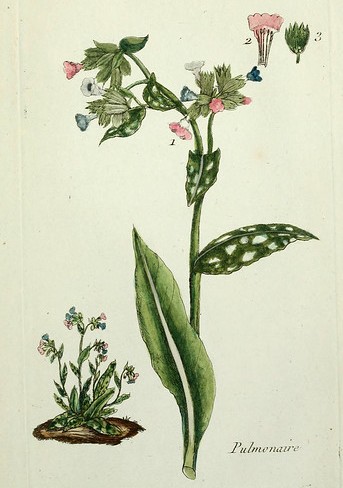
Pulmonaria officinalis – botanical illustration
The large embracing leaves are arranged in a basal rosette while small stalkless leaves adorn stems with an alternate arrangement. Dark green lamina is often splashed (P.officinalis) or even sprinkled in P. saccharata (spotted lungwort) with silvery-white markings in patterns that vary with cultivar, leaf age and season. Marks are generally most pronounced in spring when new leaves emerge and again after flowering, sometimes covering whole surface of some leaves as in P. saccharata ‘Silverado’. Clump develops mainly after flowering, producing new rosettes that enlarge colony.
Flowering stems are angular, very hairy at the top and branched, bearing short terminal clusters of little bells together with a few prophyllum (small modified leaves) between March and June depending on species. In all cases flowering readily lasts 2–3 months. Flowers of Boraginaceae have 5 fused petals forming a tube that flares into a funnel 5–10 mm long. Calyx is also tubular with 5 lobes. Colour of lungwort corolla often changes from purplish-pink to blue then violet but may remain monochrome, pure white in P. officinalis ‘Sissinghurst White’, red in P. rubra, navy blue in Pulmonaria ‘Blue Ensign’, while P. saccharata ‘Pierre’s Pure Pink’ offers romantic range of salmon-pink and pastel-pink inflorescences. Hairy throat of lungwort flowers contains 5 stamens not protruding, a single simple style extended at base by 4 carpels. Flowering attracts many bees which struggle to find food at this early stage of spring.
Fruit presents 4 smooth nutlets, a sort of small nuts which are in fact fused achenes remaining at bottom of persistent calyx after corolla falls.

Some lungwort flowers: ‘Diana Clare’, ‘Leopard’ and ‘Opal’

Some lungwort foliage: ‘Diane Clare’, Pulmonaria officinalis and Pulmonaria ‘Majesté’
Main varieties of Pulmonaria
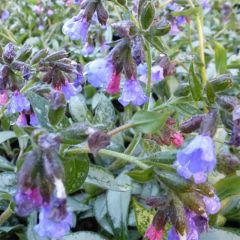
Pulmonaria Samurai - Lungwort
- Flowering time june, july
- Height at maturity 30 cm
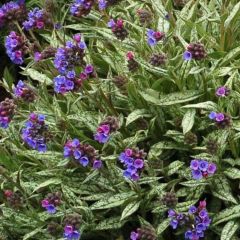
Pulmonaria longifolia subsp. cevennensis - Lungwort
- Flowering time april to june
- Height at maturity 40 cm
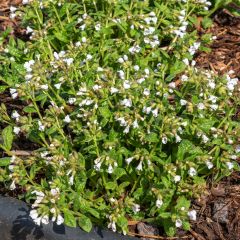
Pulmonaria Sissinghurst White - Lungwort
- Flowering time april, may
- Height at maturity 30 cm
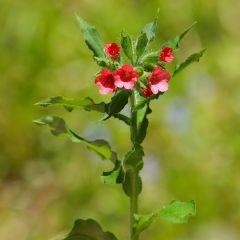
Pulmonaria rubra - Lungwort
- Flowering time march, april
- Height at maturity 35 cm
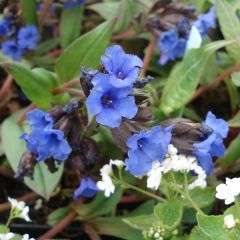
Pulmonaria Blue Ensign - Lungwort
- Flowering time may, june
- Height at maturity 25 cm
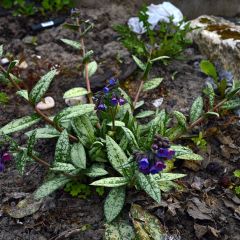
Pulmonaria Margery Fish - Lungwort
- Flowering time april, may
- Height at maturity 30 cm
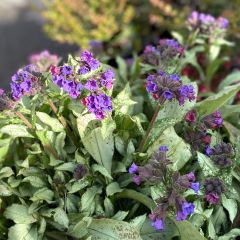
Pulmonaria Diane Clare - Lungwort
- Flowering time april, may
- Height at maturity 30 cm
Discover other Pulmonaria - Lungwort
View All →Available in 3 sizes
Available in 2 sizes
Available in 1 sizes
Available in 0 sizes
Available in 1 sizes
Available in 1 sizes
Available in 3 sizes
Available in 2 sizes
Available in 1 sizes
Available in 1 sizes
Planting
Where to plant pulmonaria?
Pulmonarias are excellent perennials groundcovers for cool climates, easily withstanding -20°C (P. officinalis, rubra and longifolia) even to -40°C for montane species such as saccharata and vallarsae. They are above all sensitive to heat and drought, which make them susceptible to fungal diseases such as powdery mildew. They appreciate understorey of leafy wood where they receive enough light to flourish before trees bud and also find spring moisture necessary for good development, as they generally flower early. They nevertheless tolerate shaded positions at the foot of bushes on the edge of a border and even dense shade such as under conifers, although flowering is less abundant there.
They all prefer a fresh, well-drained humus-bearing soil, which is often the case in a light understorey, where leaf litter humus feeds them and tree roots drain excess water. But they perfectly tolerate calcareous conditions as well as heavy, clay soils, provided they are not waterlogged.
When to plant?
Prefer autumn (October–November) to establish pulmonarias, or else February–March.
How to plant?
Allow a planting distance of 30 to 40 cm for rapid cover of the soil. This plant is very easy to grow if you take care to plant it correctly.
To plant your pulmonaria :
- Start by plunging pot or buckets into a bucket of water to thoroughly moisten them.
- Dig pockets between tree roots where you will add good compost, or work whole soil surface then spread compost.
- Avoid installing pulmonaria in a newly established perennial bed because they may smother other plants. However you can associate them with robust perennials such as hostas, comfrey or periwinkles.
- Add a dose of horn meal if soil is sandy.
- Place plant in planting hole.
- Replace soil and tamp down lightly.
- Water generously.
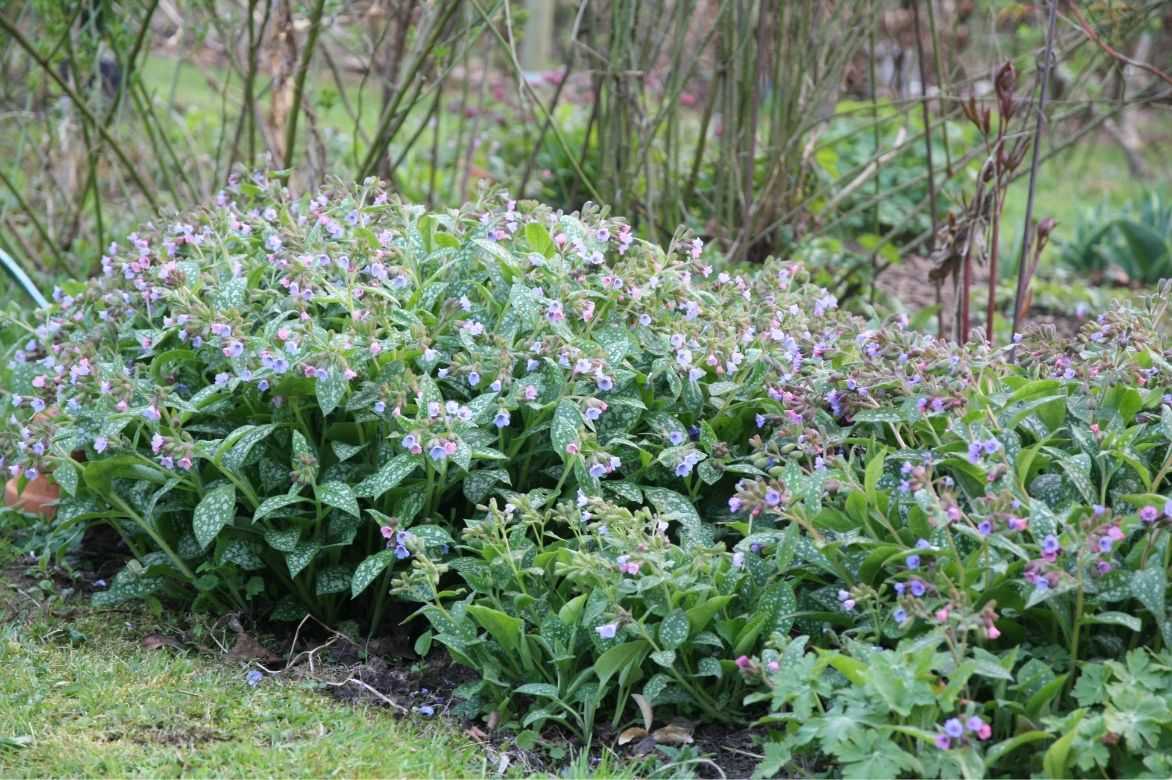
Tapetum of lungwort
Care
Lungwort requires no special care once established, but water it regularly during first year after planting. In dry conditions, foliage can be susceptible to powdery mildew, while slugs and snails can damage new shoots during wet springs.
Dividing clumps every 3 to 5 years helps keep plants vigorous.
Propagation: sowing, division
The easiest propagation method is to divide clumps in autumn or after flowering, for cultivars, or to let lungwort seed freely for wild species. Root cutting can be carried out in a greenhouse but requires a little more care.
Clump division
- Clear soil around clump;
- Using a sharpened spade or pruning shear, cut rootstock to separate new rosettes from parent plant;
- Replant them immediately in ground or in a large pot filled with humus-bearing soil;
- Plant out in ground in spring.
Sowing
- Collect natural sowings you can find in spring once seeds have germinated;
- or sow seeds harvested in summer into a pot in autumn;
- Leave pot outdoors and wait for germination, which only occurs in spring.
- Plant out in ground the following autumn.
Uses and companion planting
Perennial and fully hardy, this lungwort is mainly used as groundcover since its foliage often remains persistent through winter in well-sheltered spots. Use lungworts to add a sparkling, brightly coloured touch in spring at the foot of trees or bushes, along north- or east-facing façades or paths, and at the foot of shaded walls.
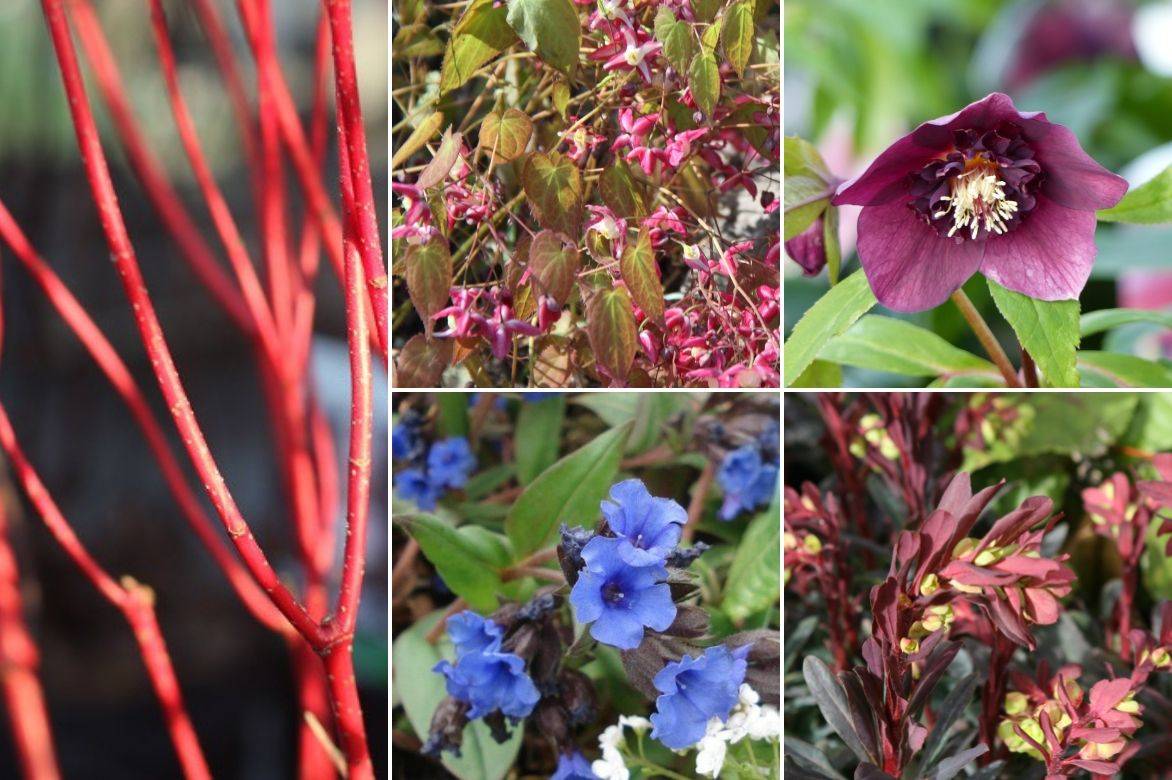
A planting idea: Cornus alba ‘Baton Rouge’ (or other coloured-wood dogwood), Epimedium rubrum, red oriental hellebore, Pulmonaria ‘Blue Ensign’ and Euphorbia amygdaloides ‘Purpurea’
Lungwort proves as robust in cool climates as comfrey (Symphytum caucasicum), greater periwinkle (Vinca major) or ivy (Hedera). Consider variegating your bed with groundcovers that flower later, such as Brunnera, Waldsteinia ternata or hardy geranium nodosum.
Feel free to plant it around hostas, primroses, small-growing astilbes, astrances or to enrich a tapetum of lungworts with spring bulbs that will naturalise, such as Muscari latifolium, wild garlic (Allium ursinum) or Anemone sylvestris, and for a more elegant effect with the single black tulip ‘Queen of the Night’.
Don’t forget that lungwort beautifully fills shady borders and even manages to grow under conifers !
Learn more
Discover our range of lungworts.
- Subscribe!
- Contents
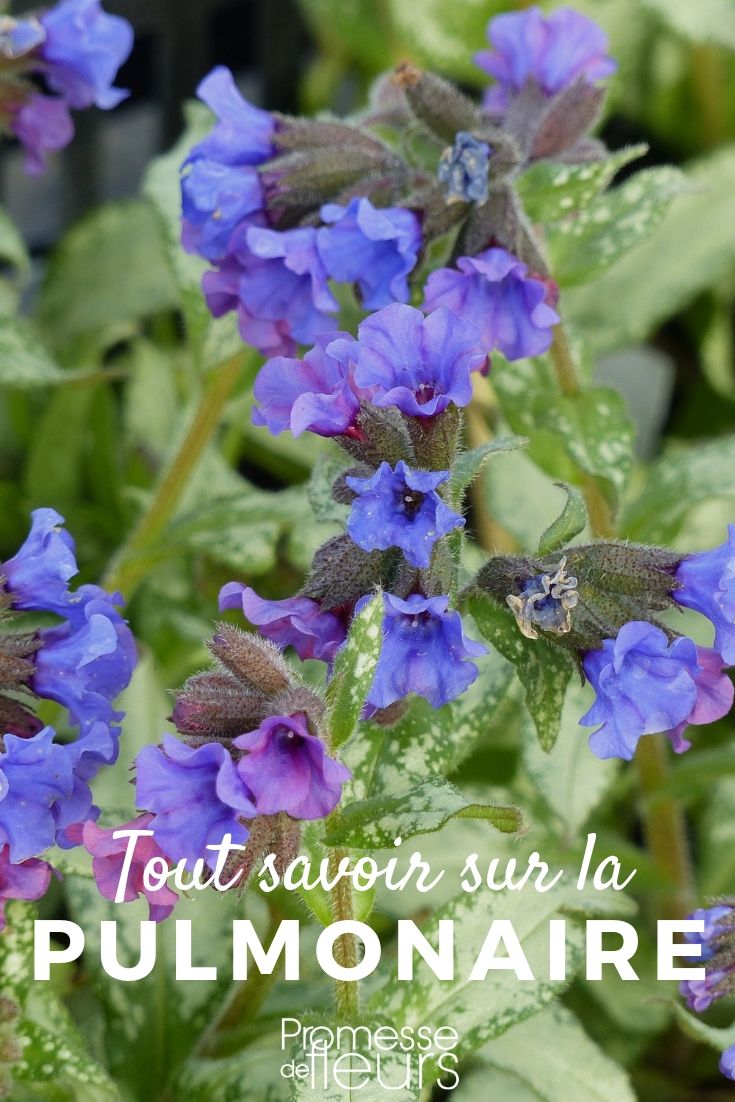


































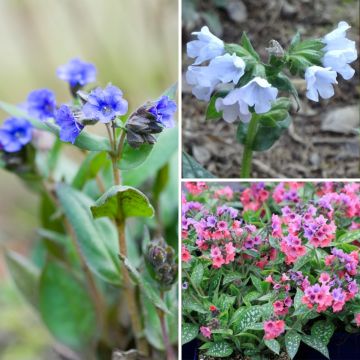

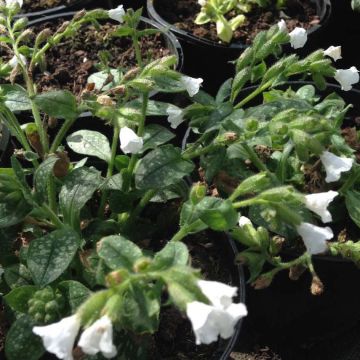

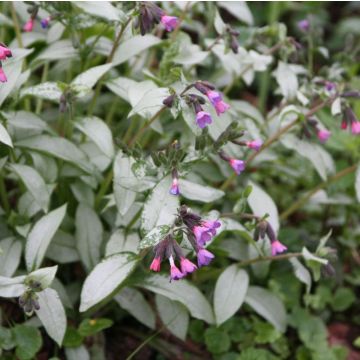
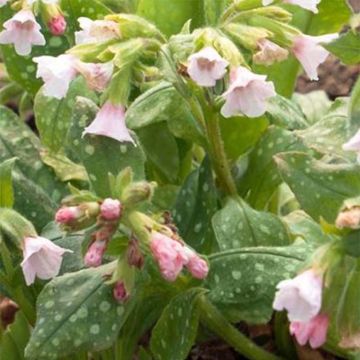

Feedbacks